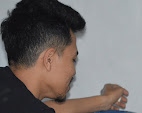Sunday, October 21, 2012
Lisa Elmaleh: The Florida Everglades in Black and White
Google's Street View photographs have transformed the way people are able to travel the world. It has also transformed how artists are able to create new artworks. The influx of digital technology has enabled the creation of new types photographic art, but this doesn't mean the old ways are now useless; even a 100-year old camera can still create beautiful new images. Lisa Elmaleh proves that with her old school large format images of the Florida Everglades in black-and-white.
Lisa Elmaleh is a photographer and artist, creating images that sometimes involves people, other times nature. Her photographic method is unique in that she uses the Collodion Process (also known as the Collodion on wet plate/glass process), a century-old technique which involves long preparation, exposure and processing times with sensitive chemicals. She uses an 8 x 10 large format camera, and processes her plates in the trunk of her car.
In 2008, she began to document the Florida Everglades in its current form. Through her large format camera, the photographs depict While the images show a wild and untamed land, they don't show the destruction of caused by urban and agricultural encroachment, a big reason why Elmaleh began her project in the first place. In 2010, she again returned to the National Park as one of the Artists in Residence in the Everglades to continue to create documentary images.
In order to create photographs such as these, the photographer first has ensure that the glass plates (the photographic "negatives") are polished to a mirror finish to ensure there are no blemishes. He then pours the collodion solution on the glass, being careful to coat the entire surface. The plate is then dipped in silver nitrate which makes it sensitive to light, therefore allowing it to record a photographic image. The plate is inserted into the camera in preparation for an exposure.
The exposure (or the actual "picture taking") can take anywhere from 30 seconds to five minutes. This is done by removing the lens cap to let the light in. The "image processing" is similar to film processing, with different liquids used as developers (used to coax out the image) and fixers (used to stop the image from being over processed), before it's ready to create a positive print.
Because of the collodion process she uses, Elmaleh's photographs of the Everglades look like they could have been taken 100 years ago. Trees, palms and bushes grow wild around the land while rivers and lakes encircle the area. The images don't look particularly astonishing, but that in itself is part of her mission and part of the Everglades itself. Elmaleh recalls what President Harry S. Truman said in his dedication speech of the Everglades National Park in 1947: "Here are no lofty peaks seeking the sky, no mighty glaciers or rushing streams wearing away the uplifted land. Here is land, tranquil in its quiet beauty...".
Photography (and video) have always had a curious position between fact and art; on the hand they are indispensable tools for reporting objective truths of the world, on the other hand they're just the medium for interpretative artworks. In Elmaheh's case, her photographs are factual recordings of the state of the Florida Everglades, however the photographic medium she uses changes the entire context. Still, in between fact and art, Elmaleh successfully shows the Everglades as land "tranquil in its quiet beauty."
Lisa Elmaleh's website is here. The large format, black-and-white photographs of the Florida Everglades are here. Her Kickstarter page has a short video discussing the her inspiration and motivation behind the Everglades project.
Subscribe to:
Post Comments (Atom)





















No comments:
Post a Comment